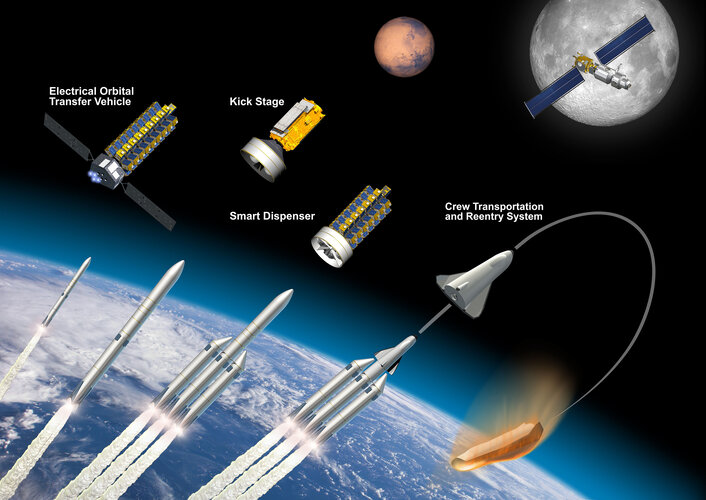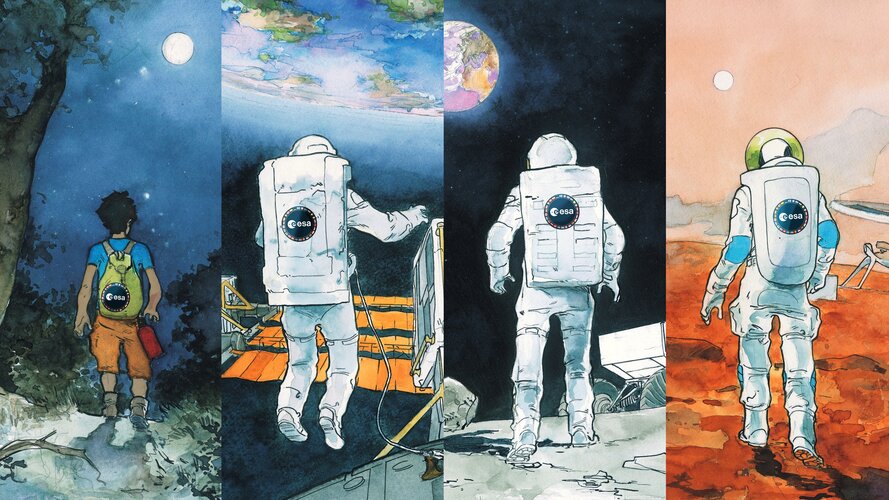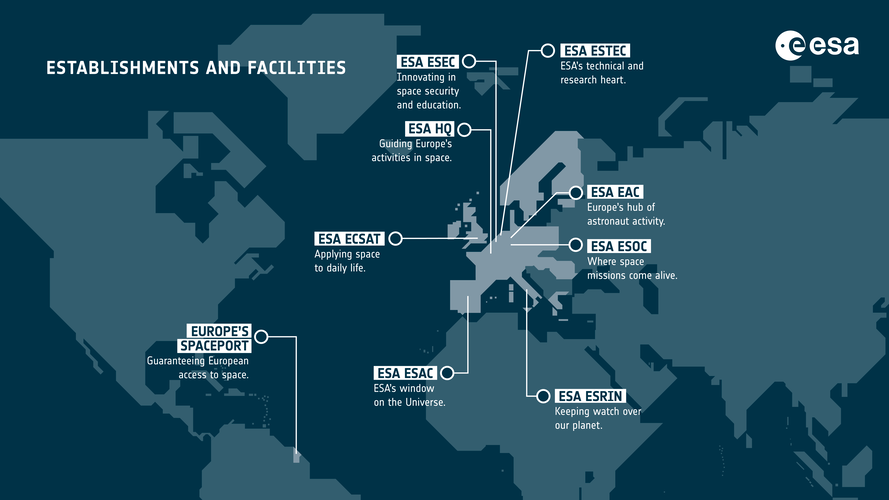Let's go to Mars
Monday, 11 July 2022 08:55 Sending humans to Mars has been a dream of scientists and a large part of the population ever since Nicolaus Copernicus first postulated that it was a planet, about 500 years ago. Even before that first Soviet satellite, Sputnik 1, was sent into orbit some 64 years ago, a mission to Mars has been the subject of many science fiction articles and books. Over the past half-century technological adv
Sending humans to Mars has been a dream of scientists and a large part of the population ever since Nicolaus Copernicus first postulated that it was a planet, about 500 years ago. Even before that first Soviet satellite, Sputnik 1, was sent into orbit some 64 years ago, a mission to Mars has been the subject of many science fiction articles and books. Over the past half-century technological adv NASA Helps Decipher How Some Distant Planets Have Clouds of Sand
Monday, 11 July 2022 08:55 A new study using archival observations by the now-retired Spitzer Space Telescope found a common trait among distant worlds where the exotic clouds form.
Most clouds on Earth are made of water, but beyond our planet they come in many chemical varieties. The top of Jupiter's atmosphere, for example, is blanketed in yellow-hued clouds made of ammonia and ammonium hydrosulfide. And on worlds
A new study using archival observations by the now-retired Spitzer Space Telescope found a common trait among distant worlds where the exotic clouds form.
Most clouds on Earth are made of water, but beyond our planet they come in many chemical varieties. The top of Jupiter's atmosphere, for example, is blanketed in yellow-hued clouds made of ammonia and ammonium hydrosulfide. And on worlds To Sicily and beyond: ESA, partners debate future of space transportation
Monday, 11 July 2022 08:25
How can Europe exploit its technical, industrial and financial strengths to ensure it remains a leader in space transportation in the 2030s and beyond? How can ESA, Europe’s national space agencies and institutions, and both established and new industrial partners better co-ordinate their efforts to meet global competition that demands innovation and cost-reduction?
These were just a few of the questions discussed during an ESA-hosted roundtable conference held on 27-28 June in Palermo, Sicily. The event, called “Shared Vision for the Future of Space Transportation in Europe”, saw more than 100 representatives of Europe’s space sector discuss the technical and
ESA to embolden Europe's space exploration
Monday, 11 July 2022 07:55
A 12-strong star-studded advisory group is to guide ESA’s human and robotic space exploration as the agency aims to increase European ambitions in space.
The James Webb Space Telescope, by the numbers
Monday, 11 July 2022 07:11
The most powerful space telescope ever built, James Webb is set to deliver its first full-color scientific images to the world Tuesday.
Here is an overview of this feat of human ingenuity, in five key figures.
More than 21 feet
The centerpiece of the observatory is its huge main mirror, measuring more than 21 feet (6.5 meters) in diameter and made up of 18 smaller, hexagonal-shaped mirrors.
The observatory also has four scientific instruments: cameras to take pictures of the cosmos, and spectrographs, which break down light to study which elements and molecules make up objects.
ESA by Interrail
Monday, 11 July 2022 06:35
Vincent Müller, a recent school-leaver, will visit all of ESA’s European sites in the next two weeks. The lucky winner of a free Interrail ticket from the DiscoverEU programme, he decided to use the ticket to make this journey and will share his experiences in a blog to enthuse young people to pursue a career in space.
Asteroid Bennu Reveals its Surface is Like a Plastic Ball Pit
Monday, 11 July 2022 05:54 After analyzing data gathered when NASA's OSIRIS-REx spacecraft collected a sample from asteroid Bennu in October 2020, scientists have learned something astonishing: The spacecraft would have sunk into Bennu had it not fired its thrusters to back away immediately after it grabbed dust and rock from the asteroid's surface.
It turns out that the particles making up Bennu's exterior are so l
After analyzing data gathered when NASA's OSIRIS-REx spacecraft collected a sample from asteroid Bennu in October 2020, scientists have learned something astonishing: The spacecraft would have sunk into Bennu had it not fired its thrusters to back away immediately after it grabbed dust and rock from the asteroid's surface.
It turns out that the particles making up Bennu's exterior are so l Surface of asteroid Bennu soft like plastic ball pit, OSIRIS-REx spacecraft finds
Monday, 11 July 2022 05:54 An amazing surprise greeted NASA's OSIRIS-REx spacecraft as it touched down on the asteroid Bennu in 2020 - The asteroid was not what it seemed - according to research published Thursday in the journals Science and Science Advances.
After it analyzed data from the spacecraft, NASA said it would have sunk into the asteroid if it hadn't fired thrusters to lift off as soon as it collecte
An amazing surprise greeted NASA's OSIRIS-REx spacecraft as it touched down on the asteroid Bennu in 2020 - The asteroid was not what it seemed - according to research published Thursday in the journals Science and Science Advances.
After it analyzed data from the spacecraft, NASA said it would have sunk into the asteroid if it hadn't fired thrusters to lift off as soon as it collecte Porosity of the moon's crust reveals bombardment history
Sunday, 10 July 2022 12:42 Around 4.4 billion years ago, the early solar system resembled a game of space rock dodgeball, as massive asteroids and comets, and, later, smaller rocks and galactic debris pummeled the moon and other infant terrestrial bodies. This period ended around 3.8 billion years ago. On the moon, this tumultuous time left behind a heavily cratered face, and a cracked and porous crust.
Now MIT scie
Around 4.4 billion years ago, the early solar system resembled a game of space rock dodgeball, as massive asteroids and comets, and, later, smaller rocks and galactic debris pummeled the moon and other infant terrestrial bodies. This period ended around 3.8 billion years ago. On the moon, this tumultuous time left behind a heavily cratered face, and a cracked and porous crust.
Now MIT scie Surprise - Again! Asteroid Bennu Reveals its Surface is Like a Plastic Ball Pit
Sunday, 10 July 2022 12:42 After analyzing data gathered when NASA's OSIRIS-REx spacecraft collected a sample from asteroid Bennu in October 2020, scientists have learned something astonishing: The spacecraft would have sunk into Bennu had it not fired its thrusters to back away immediately after it grabbed dust and rock from the asteroid's surface.
It turns out that the particles making up Bennu's exterior are so l
After analyzing data gathered when NASA's OSIRIS-REx spacecraft collected a sample from asteroid Bennu in October 2020, scientists have learned something astonishing: The spacecraft would have sunk into Bennu had it not fired its thrusters to back away immediately after it grabbed dust and rock from the asteroid's surface.
It turns out that the particles making up Bennu's exterior are so l Searching for Sand Transport
Sunday, 10 July 2022 12:42 Perseverance is currently stopped for sampling at Skinner Ridge rock. Sampling activities constitute an important aspect of Perseverance's mission, and the rover's strategic path is developed around sampling stops. During these stops, the rover must remain stationary for at least twelve sols in order to conduct proximity science and activities related to abrasion and coring. But being parked in
Perseverance is currently stopped for sampling at Skinner Ridge rock. Sampling activities constitute an important aspect of Perseverance's mission, and the rover's strategic path is developed around sampling stops. During these stops, the rover must remain stationary for at least twelve sols in order to conduct proximity science and activities related to abrasion and coring. But being parked in NASA Mirrors on ESA Pathfinder to Empower Space Geodesy
Sunday, 10 July 2022 12:42 NASA will supply the upcoming European Space Agency (ESA) Lunar Pathfinder mission with an array of laser retroreflectors, mirrored devices that reflect light back at its source. The retroreflectors will offer new opportunities for lunar science and space geodesy.
Geodesy is the scientific discipline that seeks to map Earth's shape, orientation, and gravity field. Space geodesy uses satell
NASA will supply the upcoming European Space Agency (ESA) Lunar Pathfinder mission with an array of laser retroreflectors, mirrored devices that reflect light back at its source. The retroreflectors will offer new opportunities for lunar science and space geodesy.
Geodesy is the scientific discipline that seeks to map Earth's shape, orientation, and gravity field. Space geodesy uses satell Everyone gets to savour the Avanavero flavours: Sols 3528-3529
Sunday, 10 July 2022 12:42 Both the CheMin and SAM instruments have dined on the Avanavero drill samples and have decided their appetites are sated. CheMin has completed X-ray diffraction mineralogical analysis of the Avanavero drill sample, and SAM their Evolved Gas Analysis. Both instrument teams are satisfied with their analyses and SAM are not opting to do a Gas Chromatography-Mass Spectrometry run.
Now it is th
Both the CheMin and SAM instruments have dined on the Avanavero drill samples and have decided their appetites are sated. CheMin has completed X-ray diffraction mineralogical analysis of the Avanavero drill sample, and SAM their Evolved Gas Analysis. Both instrument teams are satisfied with their analyses and SAM are not opting to do a Gas Chromatography-Mass Spectrometry run.
Now it is th Follow CAPSTONE's Four-Month Journey to the Moon in Real Time
Sunday, 10 July 2022 12:42 NASA's microwave oven-sized CubeSat dubbed CAPSTONE is flying solo, blazing an unusual yet efficient deep space route to the Moon. The CubeSat is heading toward an unique orbit intended in the future for Gateway, a lunar space station built by the agency and its commercial and international partners that will support science and human exploration under Artemis.
During the next four months,
NASA's microwave oven-sized CubeSat dubbed CAPSTONE is flying solo, blazing an unusual yet efficient deep space route to the Moon. The CubeSat is heading toward an unique orbit intended in the future for Gateway, a lunar space station built by the agency and its commercial and international partners that will support science and human exploration under Artemis.
During the next four months, Jacobs Awarded $3.9B Engineering and Science Contract at NASA
Sunday, 10 July 2022 12:42 Jacobs (NYSE:J) was awarded the JSC Engineering, Technology, and Science (JETS) II contract at NASA Johnson Space Center in Houston, Texas.
Jacobs is scheduled to begin contract transition on Aug. 1 to continue providing engineering and scientific products and technical services for NASA at Johnson Space Center (JSC). The contract maximum value is estimated at approximately $3.9 billion ov
Jacobs (NYSE:J) was awarded the JSC Engineering, Technology, and Science (JETS) II contract at NASA Johnson Space Center in Houston, Texas.
Jacobs is scheduled to begin contract transition on Aug. 1 to continue providing engineering and scientific products and technical services for NASA at Johnson Space Center (JSC). The contract maximum value is estimated at approximately $3.9 billion ov 
